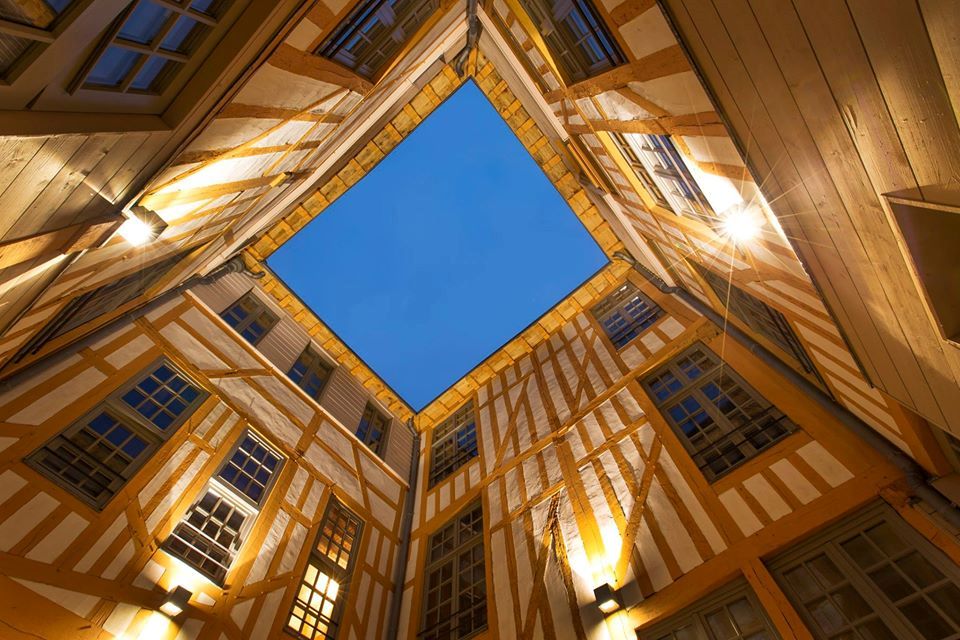Add to bookmark
Parish of the Troyes’ Polish community. Supposedly built on the site of a synagogue it is a true museum of 16th century Troyes statuary, since statues saved during the revolution were hidden here. Certain are by Dominique le Florentin, a Troyes artist and decorator for Francois 1st.
Not to be missed: “grisaille” stained glass, dating from the mid-16th century, very realistic polychrome group depicting the Arrest of Saint Crépin and Saint Crépinien, magnificent 17th c. chestnut vault.
Vauluisant Museum :
Two museums in this former private mansion, originally the guest quarters of the certercian monks of the MONKS of the abbey of Vauluisants.
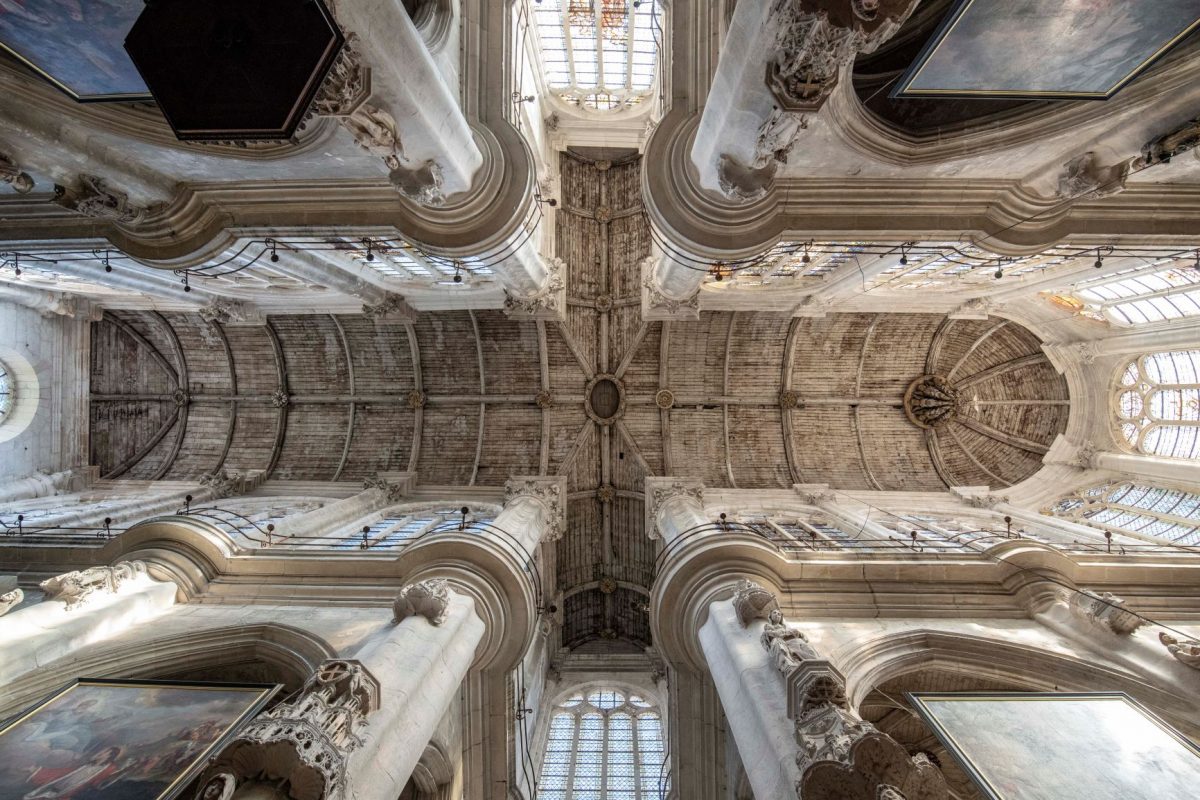
Private mansion built in 1560 by Jean Mauroy, “aides” and “tailles” tax collector, transformed into an orphanage, the so-called “Trinité des Enfants Bleus” [Trinity of Blue Children], directed by the Frères de la Rédemption de Paris. It was here that the hosiery industry was born in 1746. ”Les Compagnons du Devoir du Tour de France“ (journeymen) restored it from 1969.
Created under the impetus of Father Paul Feller (1913-1979) the Tool Centre has become one of the largest museums for manual tools in the world, not only for the quality, quantity and exhaustiveness of the tools presented, but also for the unique, timeless presentation that transforms it into the “Manual Worker’s Louvre”.
Not to be missed: A collection of 12,000 tools dating from the 17th to 19th centuries represents a tribute to manual trades, with sections focusing on stone, earth, iron, wood and leather. The library of 32,000 books, of which two thirds concern manual trades, has a Vitruve dating from 1572 and a first edition of the Diderot and D’Alembert Encyclopaedia (35 volumes).
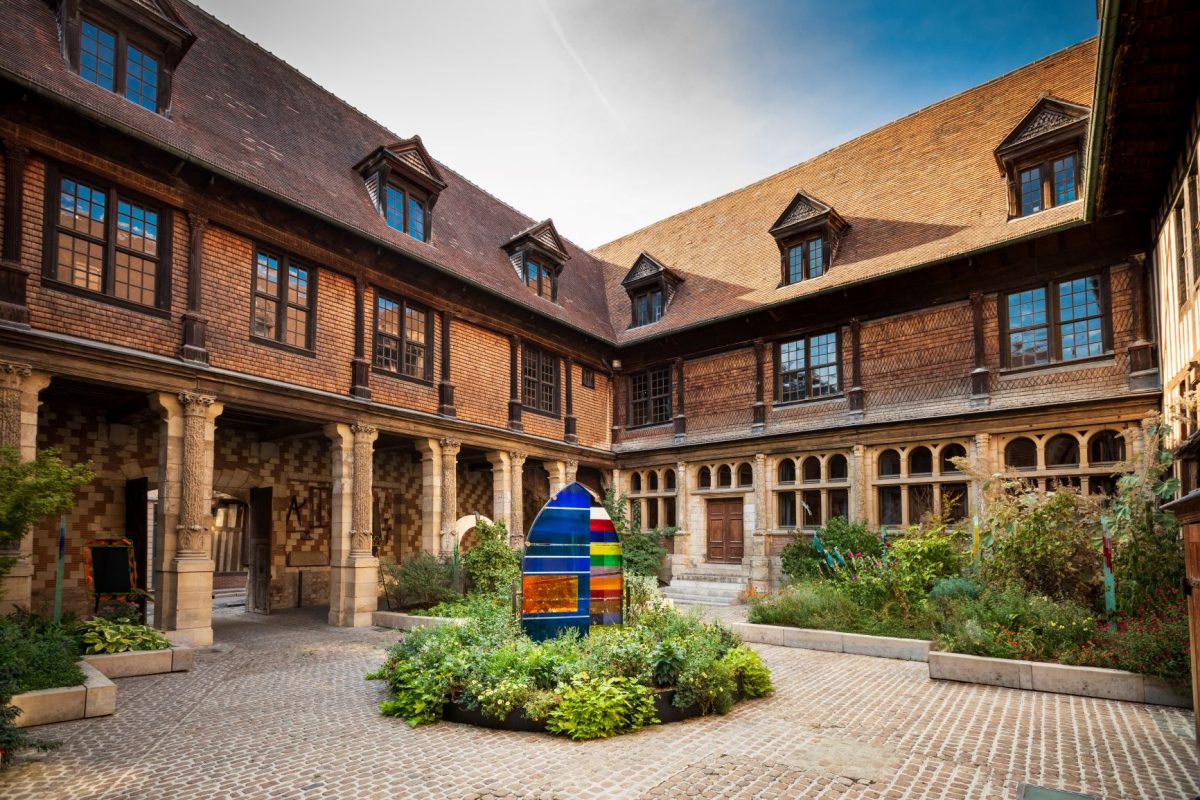
The foires de Champagne, between the 12th and 13th centuries, were mainly held around the Saint-Jean au Marché church and in the adjacent streets and squares, each specializing in one or more types of trade, such as second-hand clothes, pepper,poultry, material, salt, etc.
On this square the money-changers operated. They were often jews or lombardys (from northern Italy), many of whom had been living in Troyes for generations.
With the decline in the fairs in the 14th century, the square was increasingly taken over by horticulturists and it was then called the place du Marché-aux-Herbes.
This must’ve been one of the liveliest squares in the city back in the Middle Ages. It owes its name to the bakers, who used to come to make their bread and sell it by the loaf.
The elegant well that you see here is the original one. There used to be almost eighty wells like this one, all over the Bouchon de Champagne (Champagne Cork) area.
As well as providing a water supply for households and for the construction industry, these wells played an important firefighting role. The fire which raged in 1524 is wellrecorded: it started in an apothecary’s stall in this part of town and tore through 1,500 houses, razing a third of the city to the ground…
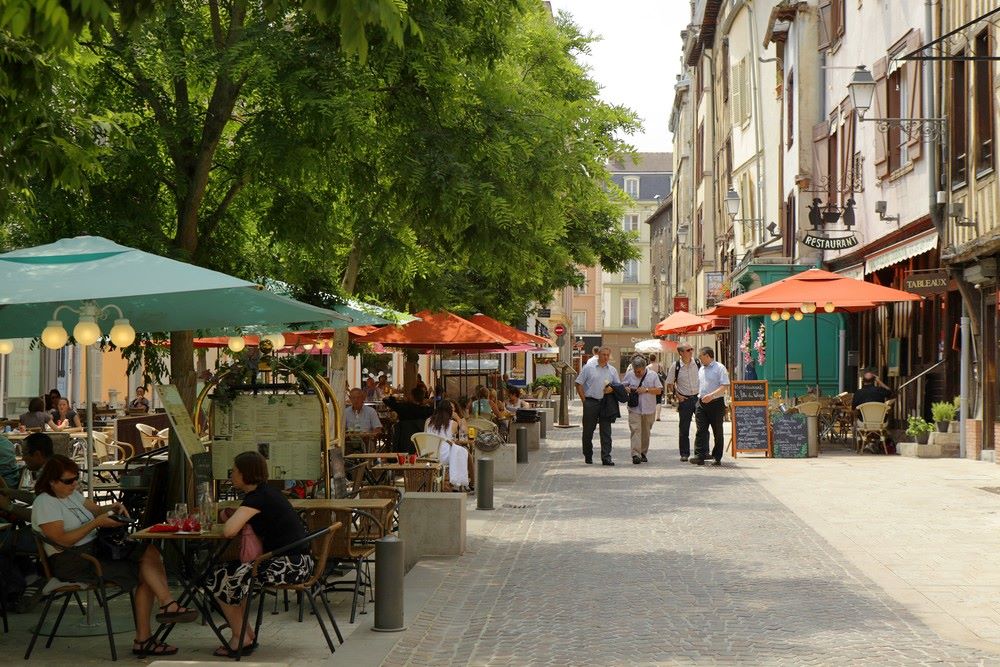
Nicknamed the Lili au chapeau, this sculpture was created by a Hungarian artist, Andras Lapiz, whose favourite theme seems to be the ladies in hats.
A similar statue is located at the foot of the Hungarian Institute in Paris.
Our Trojan Lili is installed on a bench and flips through a book on the Counts of Champagne.
It is made of bronze and measures 1.25m.
It has become an obligatory stopover for photographers passing through Troyes.
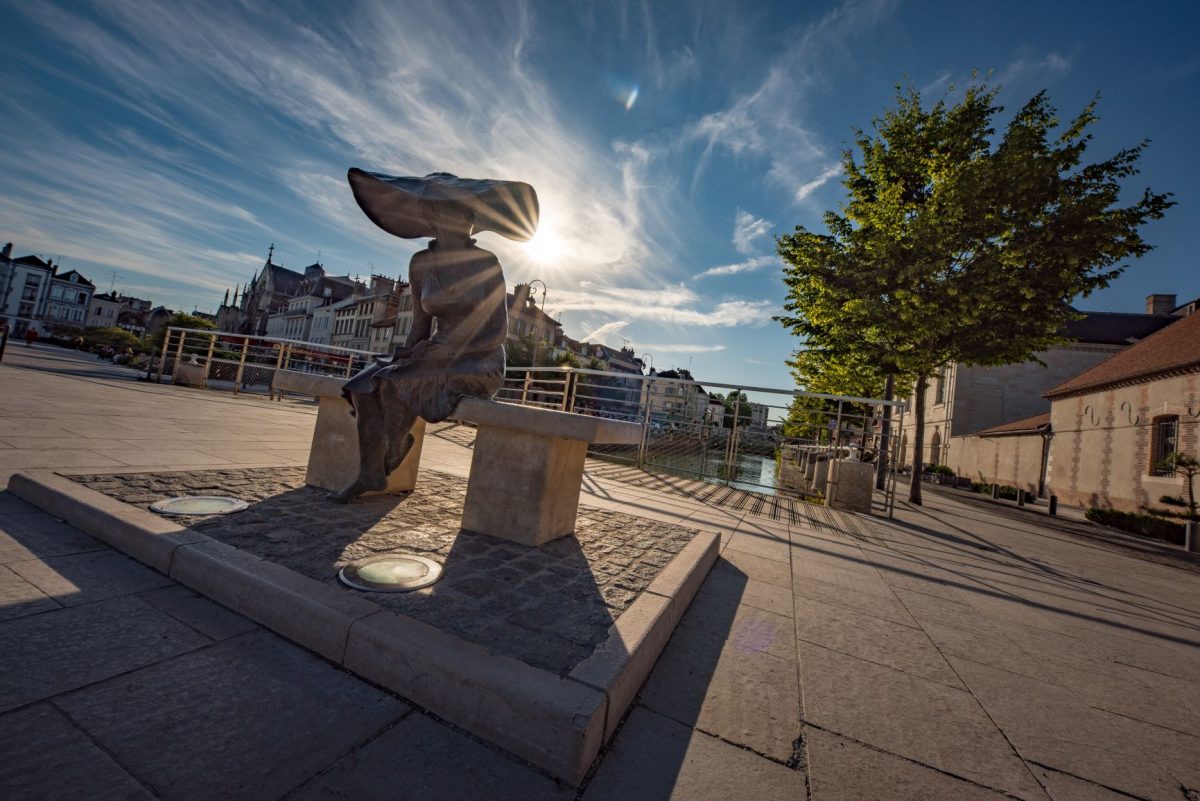
Built over a 400-year period and measuring 114 meters in lenght, 50 meters in width and 29.50 meters in height under the vaults, the cathedral is a fine example of Gothic architecture. The façade with its three superb gates is the work of Martin Chambiges. Saint-Paul’s steeple is incomplete, still as it was left in 1545.
The Tower houses an interesting treasure with, in particular, the saint Bernard de Clairvaux Shrine, a marvellous 13th c. chape (a liturgical ornament in red silk embroidered with 53 medallions) and a fine collection of Mosan and Limousin enamels (12th and 13th c.). The choir rail removed in the 19th c., now marks the entrance to a room in the New York Metropolitan Museum.
Not to be missed: Its 1500 m2 of stained glass dating from between the 13th and 19thc. make it a fantastic book of images.
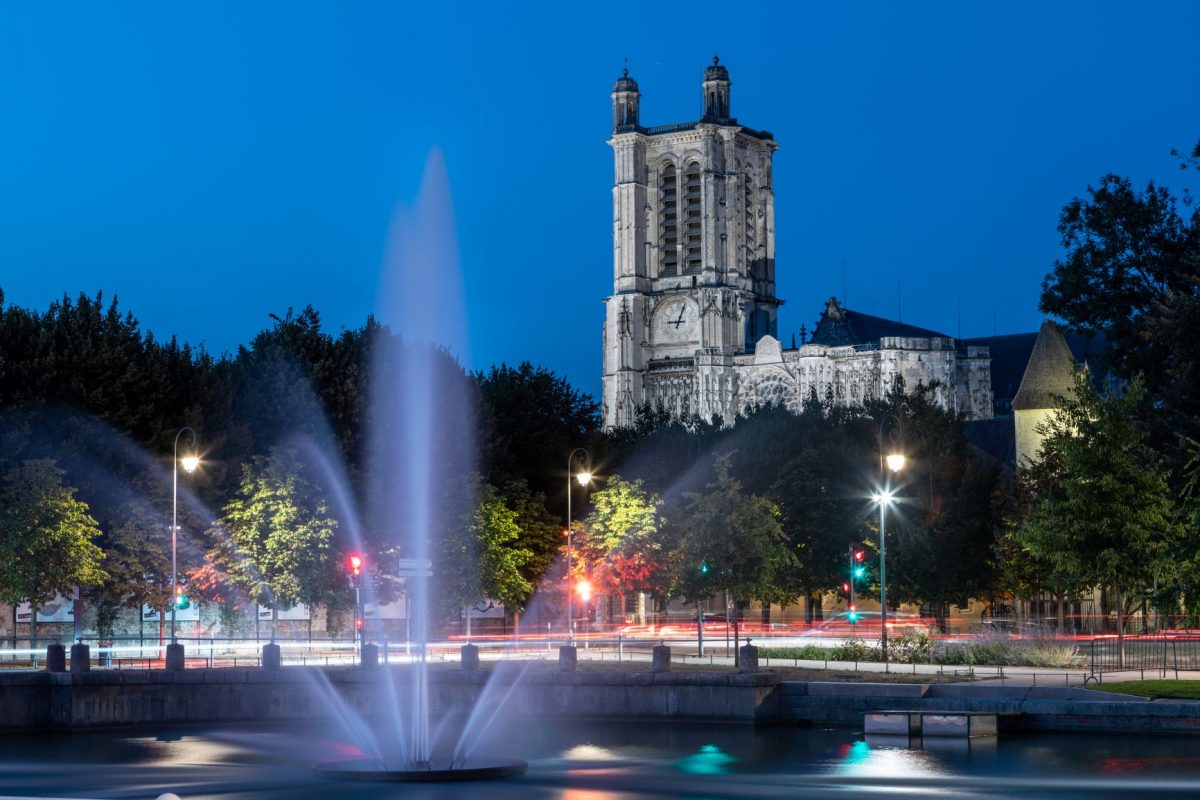
This sculpture, by local artists Michèle and Thierry Kayo-Hoüel, which has quickly become the city’s new emblem, sits on the renovated quays long the old canal. This disused waterway marks the boundary between the city centre’s “head” and “body”. This pierced heart is also the heart of the city itself, both physically and metaphorically.
It is a truly elegant work of art that belies its true weight (2 tonnes), yet boasts dimensions that are of potentially record breaking proportions (4 metres wide, 3.5 metres tall and 2 metres deep). It is nevertheless a highly emotive piece, glowing red at night as you approach i.
This monument symbolises the romantic side of the old town. Indeed, Troyes was privileged to host the “Courts of Love”, where matters of love and the heart were decided and disputes between spouses were arbitrated. There was also a time when Troyes was the venue of choice for royal weddings, with monarchs such as Louis X of France and Henry V of England. Troyes was also the place where Andreas Capellanus wrote his famous treatise on love, known as “The Art of Courtly Love”.
Troyes is a place that touches the soul and makes the heart beat stronger !
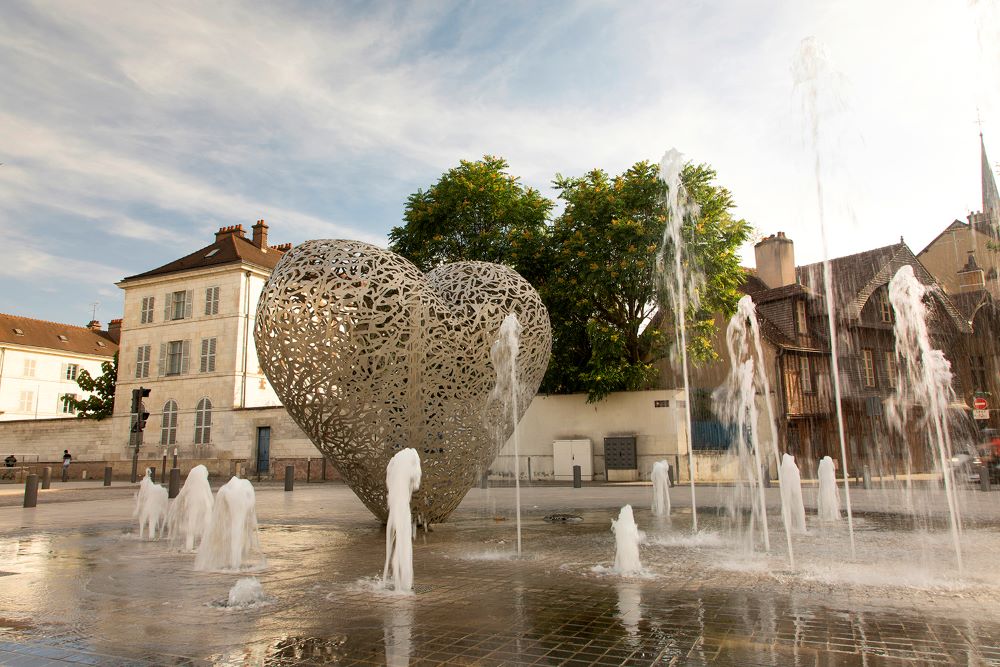
Consecrated as a basilica in 1964, it is a pure jewel of Gothic art similar in style to the St-Chapelle in Paris and the Church of St-Ouen in Rouen. Founded by Jacques Pantaléon, who was elected Pope in 1261 under the name of Urbain IV, it was erected on the site of his father’s cobbler’s shop. His remains were brought back from Perouse (Italy) and placed in the Choir in 1935.
The Basilica was rapidly erected between 1262 and 1286, but it took 6 centuries for the nave vault in stone to be built.
Not to be missed: the tympanum of the main gate (13th c.), which represents the Last Judgement. Its gargoyles, realistic bestiary works of art. In the chapel on the south side, the ravishing “Vierge au raisin” [Virgin with grapes”] (16th c. Troyes School) whose dress was once in bright colours. In the chevet, 13th c. stained glass windows.
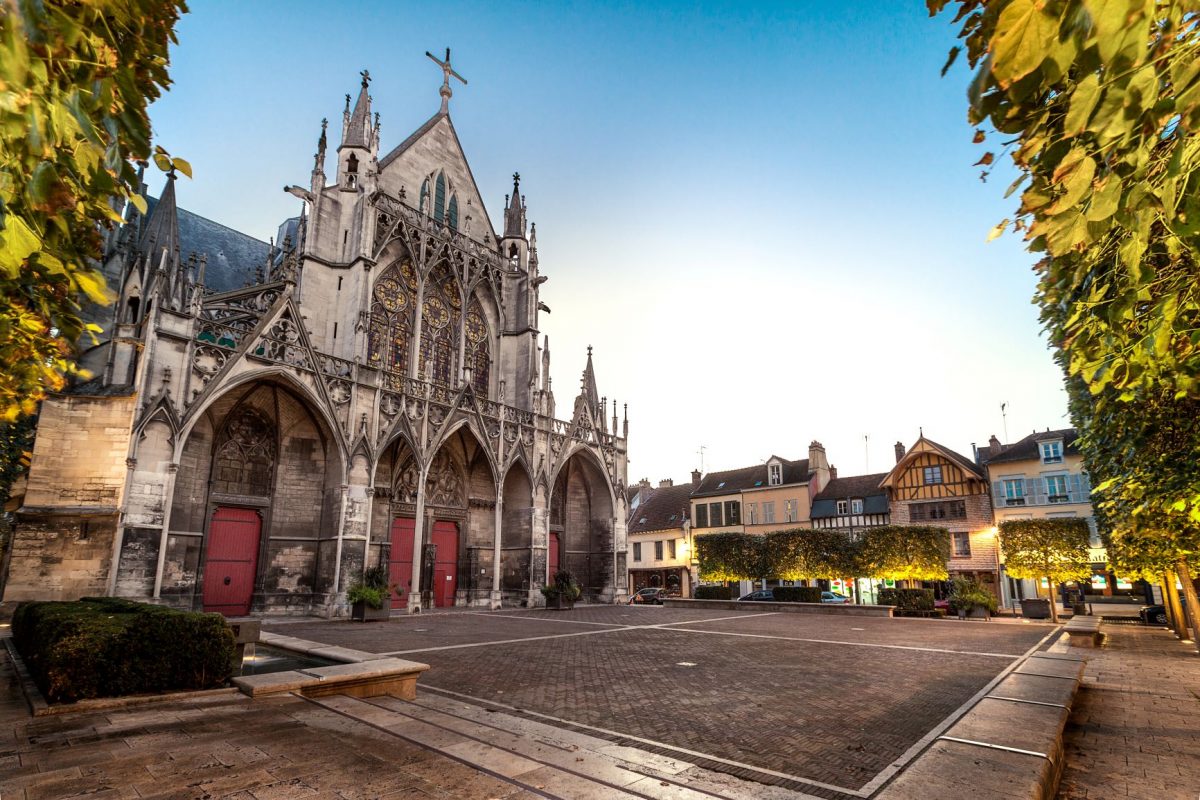
In the Louis XIII style (1624-1672). Above the entrance porch the statue of “minerve casquée” replaced that of Louis XIV, smashed in 1793, and is accompanied by the revolutionary motto in its original form “freedom equality, fraternity, or death”.
In the council Room, medallion in marble of Louis XIV by François Girardon (1690).
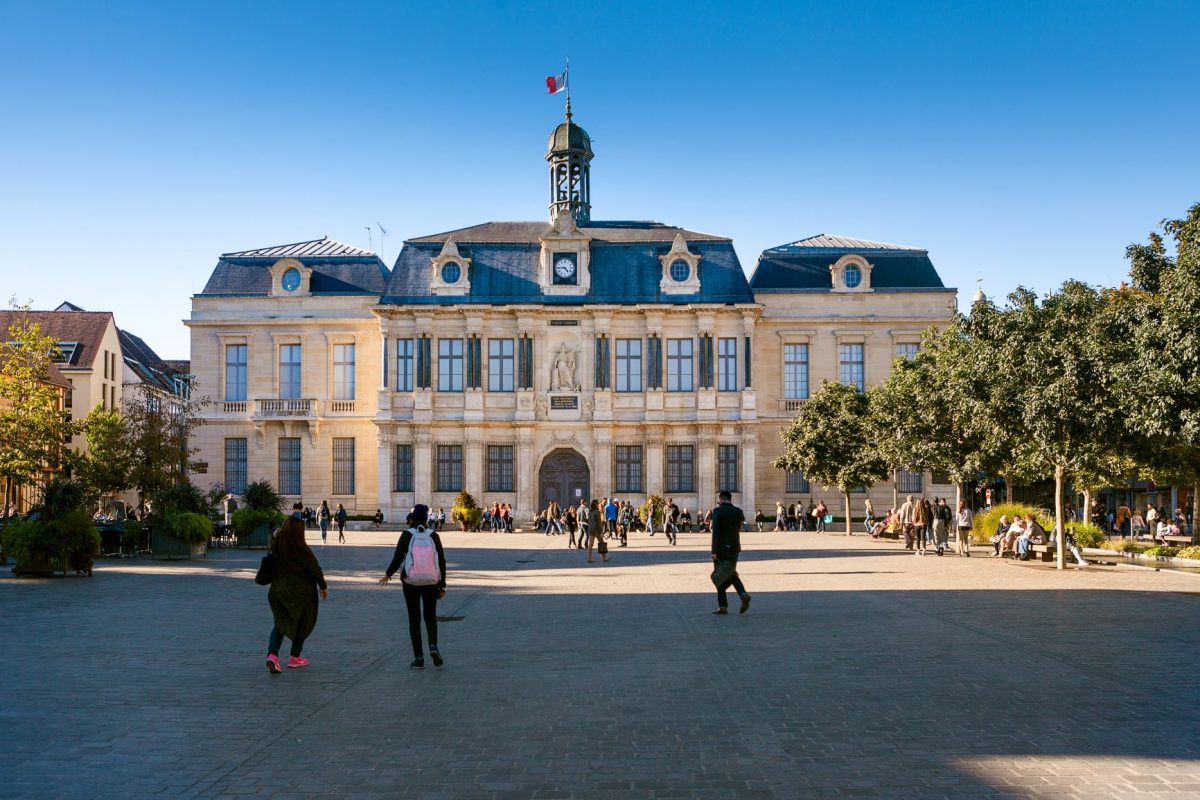
This house with a tower, known as the Silversmith’s Tower, is a typical example of Troyes architecture. It was built between 1578 and 1618 for François Roize, a silversmith and Nicole Boulanger’s husband. The tower is borne by three statue columns representing two caryatids and one Atlante and houses the staircase. In 1300 the silversmith community occupied the rue Paillot de Montabert and held meetings celebrating Saint Eloi at the nearby Church of Sainte Madeleine. In 1594 there were 28 masters.
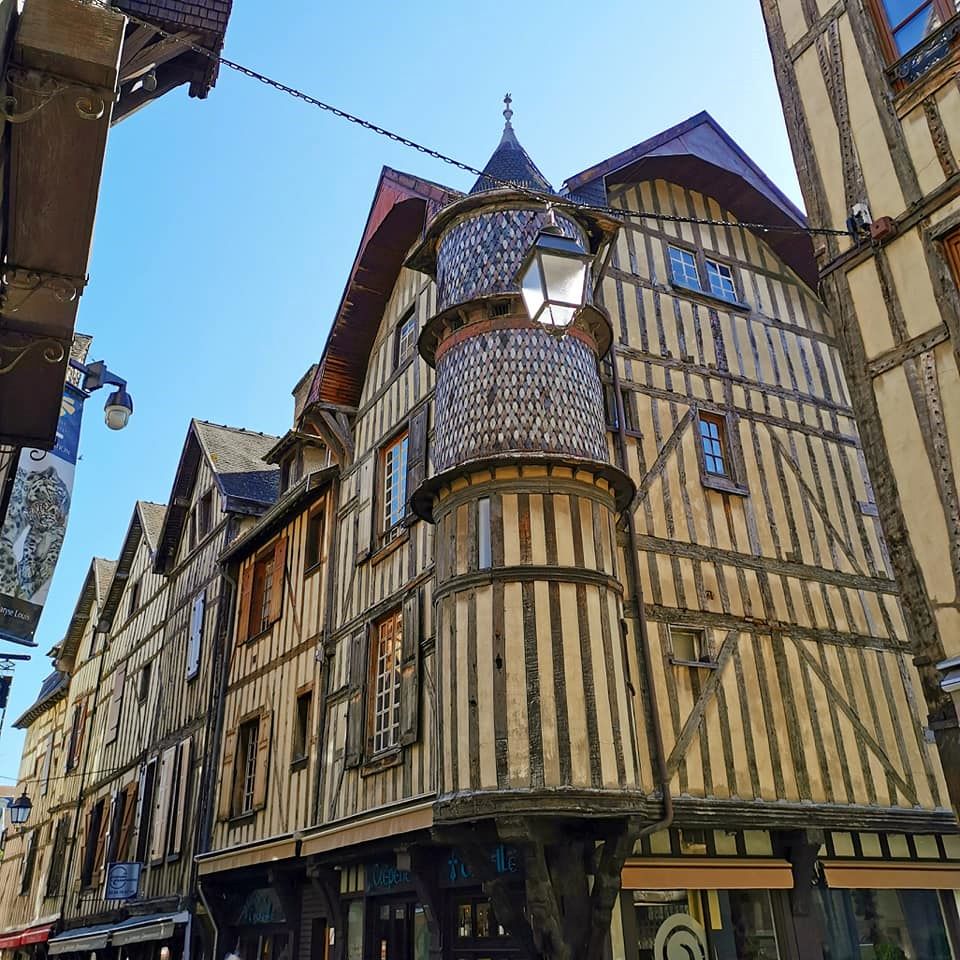
Known as Rue Maillard in the 15th century, the locals began calling this street “Cats’ Alley” from the 19th century because the adjoining roofs of its houses enabled cats to pass from one attic to the next.
See if you can find the cat’s head sculpted into one of the joist end-pieces!
Cobbled in the ancient style, just like all the streets of Troyes from the 13th c., the Ruelle des Chats features a central channel that once served a specific purpose, allowing the fortunate inhabitants to avoid soiling their shoes by staying above this drainage feature. Along the walls, stone bollards (“bouteroues”) were installed to protect the houses from passing carts.
The most emblematic of all the streets of Troyes was recently enhanced by a group of three new half-timbered houses that were reconstituted piece by piece on the basis of old picture postcards and engravings from the era. This dark but charming street leads to the very picturesque Mortier d’Or courtyard and the Jardin Juvénal.
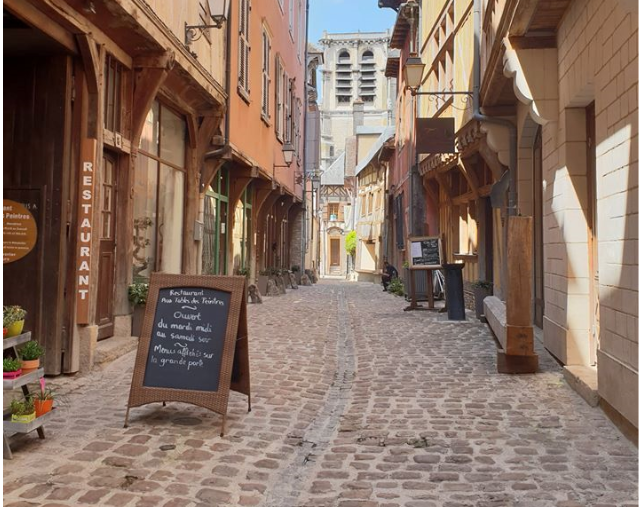
Sainte-Madeleine is perhaps the oldest church of Troyes (12th c.) and certainly one of the most beautiful. It is above all famous for its stone jubé, true chiselled lace, sculpted by Jean Guailde (early 16th c.) who, according to the legend, is buried beneath it.
Not to be missed: the statue of Sainte-Marthe, a typical example of Troyes 16thc. art, said to have been produced by the “Master of Sad Faces” Workshop. Stained glass windows of the 16thc Champagne School.
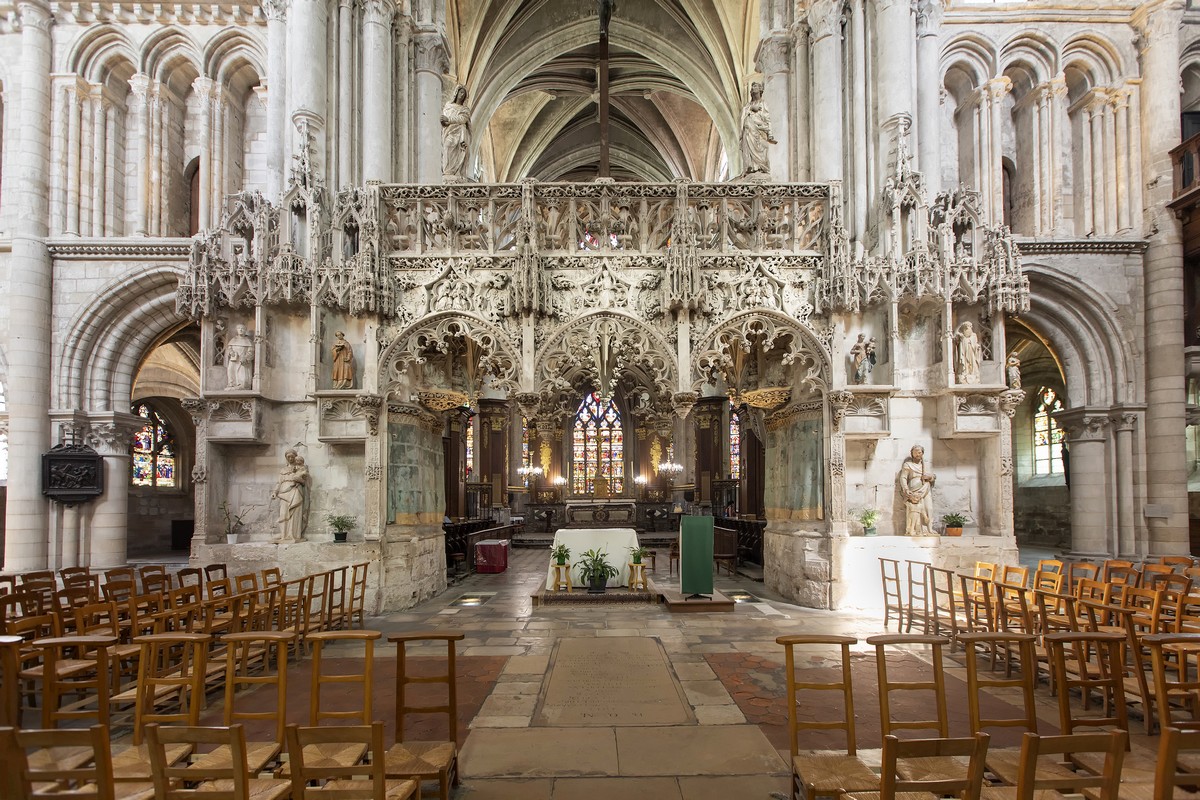
The Rashi House of Troyes invites you to an incredible trip in time via a stroll through the 2000 square meters of our restored buildings. The recreated oratory and bet hamidrash (study hall) will plunge you into the medieval Troyes of Rashi!
You will discover too the splendid glass roof which completely covers the sanctuary. You will also visit the exhibition galleries which recount the adventure of this reconstruction, and highlight Rashi by an innovative scenographic approach to his work and his history!
The Rashi House and the Synagogue are a testament to the importance of Troyes’ Jewish community. The community has been present in the city since the 11th century, with the world-renowned scholar Rashi, (a contraction of Rabbi Chlomo Itzhaki – Rabbi Solomon, son of Isaac) (1040-1150). He founded a famous Talmudic school in Troyes in 1070, where students studied sacred Jewish texts. His commentaries remain an important authority to this day and have had a major influence on European thought. His annotations explain the literal meaning of the Old Testament and the Talmud.
Not to be missed: the large prayer room with its glass roof; the stained-glass window by Flavie Vincent-Petit; the reconstruction of the oratory and the Beth Hamidrash; the exhibition halls, which tell the story of Rashi’s works and life.
